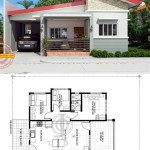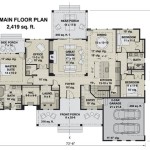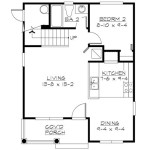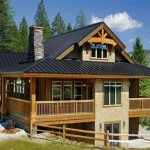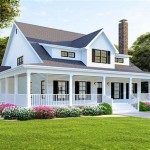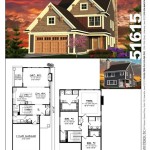Cabin House Plans: Southern Living Inspiration
The allure of a cabin home resonates deeply, particularly in the Southern United States. These homes evoke feelings of warmth, comfort, and connection to nature. When considering cabin house plans, "Southern Living" stands as a valuable resource and source of inspiration, offering designs that blend regional aesthetics with modern functionality. A "Southern Living" cabin house plan often prioritizes outdoor living, emphasizes natural light, and incorporates elements that complement the Southern landscape.
This article explores the key considerations when selecting or adapting cabin house plans, drawing inspiration from the "Southern Living" design philosophy. It will delve into the stylistic elements common in Southern cabin architecture, discuss the importance of site adaptation, and examine the functional aspects that contribute to comfortable and efficient cabin living.
Key Elements of Southern Cabin Design
Southern cabin design isn't merely about constructing a small, rustic abode. It encompasses a specific aesthetic that draws from regional history and natural resources. Several key elements distinguish these designs, making them uniquely Southern and intrinsically appealing.
One of the most prominent features is the use of natural materials. Timber, stone, and brick are frequently incorporated, both on the exterior and interior. Wood siding, often with a rustic or weathered finish, is a common choice. Stone or brick accents, such as chimneys, foundations, and patios, add visual interest and a sense of permanence. These materials blend seamlessly with the natural surroundings, creating a harmonious connection between the cabin and its environment. The use of reclaimed materials, such as barn wood or repurposed brick, is also popular, adding character and a sense of history to the structure.
Porches are another essential feature of Southern cabins. These outdoor spaces provide shelter from the elements and offer a place to relax and enjoy the surrounding scenery. Deep, covered porches are particularly favored, often wrapping around the cabin to maximize outdoor living opportunities. Rocking chairs, swings, and outdoor dining areas are common additions, creating inviting spaces for socializing and unwinding. The porch acts as a transitional zone between the interior and exterior, extending the living space and fostering a connection with nature.
Large windows and natural light are also crucial aspects of Southern cabin design. These elements help to bring the outdoors in, creating a bright and airy interior. Strategically placed windows can capture views of the surrounding landscape, maximizing the connection to nature. Skylights and clerestory windows can also be used to introduce additional natural light into the cabin, particularly in areas where wall space is limited. The emphasis on natural light contributes to a sense of well-being and creates a welcoming atmosphere.
Details such as exposed beams, wood ceilings, and fireplaces further enhance the rustic charm of Southern cabins. Exposed beams add architectural interest and create a sense of volume, while wood ceilings provide warmth and texture. Fireplaces serve as a focal point, providing both heat and ambiance. These elements contribute to the overall character of the cabin, creating a comfortable and inviting space.
These design choices are often directly influenced by the climate and resources available in the South. The use of natural materials reflects the abundance of timber and stone in the region, while the emphasis on porches and natural light reflects the desire to enjoy the outdoors year-round. The overall aesthetic is one of understated elegance, blending rustic charm with modern comfort.
Adapting Cabin Plans to the Southern Landscape
Selecting a cabin house plan is only the first step. Adapting the plan to the specific site is crucial for ensuring that the cabin integrates seamlessly with the surrounding landscape and maximizes its potential. This involves considering various factors, including topography, climate, and vegetation.
Topography plays a significant role in determining the placement and orientation of the cabin. Building on a sloping site, for example, may require adjustments to the foundation and floor plan. Terracing the land can create level areas for outdoor living spaces, while retaining walls can help to stabilize the soil. The goal is to minimize site disturbance and work with the natural contours of the land. "Southern Living" often showcases homes that are carefully integrated into their surroundings, demonstrating how thoughtful site planning can enhance the overall aesthetic and functionality of the cabin.
Climate considerations are also paramount. In the Southern United States, summers can be hot and humid, while winters can be mild but still require adequate heating. Designing for passive solar heating and cooling can help to reduce energy consumption and improve comfort year-round. Orienting the cabin to maximize sunlight exposure in the winter and minimize it in the summer can significantly impact its energy efficiency. Overhangs and awnings can provide shade, while strategically placed windows can promote natural ventilation. The selection of building materials should also take into account the local climate. Durable, weather-resistant materials are essential for withstanding the elements.
Vegetation is another important factor to consider. Preserving existing trees and shrubs can help to maintain the natural beauty of the site and provide shade and privacy. Selecting native plants for landscaping can further enhance the connection to the surrounding environment and reduce the need for irrigation and maintenance. The goal is to create a harmonious relationship between the cabin and its natural surroundings. This may involve adjusting the floor plan to accommodate existing trees or incorporating natural features into the landscaping design.
Furthermore, considerations for local regulations and building codes are essential. Zoning ordinances may dictate setbacks, height restrictions, and other requirements that must be adhered to. Building codes ensure that the structure is safe and meets minimum standards for construction. It is crucial to consult with local authorities and hire qualified professionals to ensure that the cabin complies with all applicable regulations.
By carefully considering these factors, it is possible to adapt a cabin house plan to the Southern landscape in a way that is both aesthetically pleasing and environmentally responsible.
Functional Considerations for Cabin Living
Beyond aesthetics and site adaptation, functional considerations are crucial for creating a comfortable and efficient cabin home. The floor plan should be designed to maximize space utilization and accommodate the needs of the occupants. Practicality and convenience are key elements in successful cabin design.
Space planning is paramount, especially in smaller cabins. Open floor plans are often favored, as they create a sense of spaciousness and allow for easy flow between different areas. Combining the living room, dining area, and kitchen into a single open space can make the cabin feel larger and more inviting. Thoughtful storage solutions are also essential for maximizing space utilization. Built-in shelves, cabinets, and closets can help to keep the cabin clutter-free and organized. Utilizing vertical space, such as loft areas or high ceilings, can also provide additional storage or living space.
Kitchens in cabins are often designed to be compact but functional. Efficient layouts, such as galley kitchens or L-shaped kitchens, can maximize counter space and storage. High-quality appliances are essential for ensuring that the kitchen is both convenient and durable. A well-designed pantry can provide ample storage for food and supplies. The kitchen should be conveniently located near the dining area and outdoor grilling areas.
Bathrooms in cabins should be designed for both comfort and efficiency. Compact layouts, such as those with a shower stall instead of a bathtub, can save space. Low-flow toilets and showerheads can help to conserve water. Adequate ventilation is essential for preventing moisture buildup. The use of natural materials, such as stone or wood, can create a spa-like atmosphere.
Bedrooms in cabins should be designed to be peaceful and relaxing. Ample natural light and ventilation are essential for creating a comfortable sleeping environment. Storage solutions, such as built-in closets or dressers, can help to keep the bedroom organized. The location of the bedroom should be carefully considered to minimize noise and maximize privacy.
Energy efficiency is another key consideration for cabin living. Proper insulation, energy-efficient windows and doors, and a well-designed HVAC system can help to reduce energy consumption and lower utility bills. Renewable energy sources, such as solar panels or geothermal systems, can further reduce the cabin's environmental impact. The goal is to create a cabin that is both comfortable and sustainable.
Accessibility is also an important consideration, especially for those with mobility issues. Designing the cabin with wide doorways, ramps, and accessible bathrooms can make it easier for people of all abilities to enjoy the space. Universal design principles can be incorporated into the cabin design to ensure that it is both functional and accessible.
By carefully considering these functional aspects, it is possible to create a cabin home that is both comfortable and efficient, and that meets the needs of the occupants.
In conclusion, creating a Southern-inspired cabin home involves far more than simply choosing a set of blueprints. It requires a deep understanding of regional aesthetics, careful adaptation to the site, and a focus on functional considerations. By drawing inspiration from resources like "Southern Living" and working with experienced professionals, it is possible to create a cabin that embodies the warmth, comfort, and connection to nature that are so characteristic of Southern living.
:max_bytes(150000):strip_icc()/southern-living-house-plans-21-088de599dad04be293da9f4a0b5de4bf.jpg?strip=all)
20 House Plans That Maximize Storage Space For The Organized Home Of Your Dreams

Grace Park Cottage Southern Living House Plans
:max_bytes(150000):strip_icc()/SL-988_FCR-0a1aa759de95445a96be45a8aefc2749.jpg?strip=all)
Cabins And Cottages Under 1 000 Square Feet

Our Town Plans
30 Small House Plans That Are Just The Right Size
:max_bytes(150000):strip_icc()/1450CedarCreekGuestHousePlanImage-8572e78026484eccbae8883ec5ca392e.jpg?strip=all)
Cabins And Cottages Under 1 000 Square Feet
These All Time Best Southern Living House Plans Are Certified Dream Homes
:max_bytes(150000):strip_icc()/southern-living-house-plans-20-26c63442806943a1803d9367b2ee4008.jpg?strip=all)
20 House Plans That Maximize Storage Space For The Organized Home Of Your Dreams

Our New Favorite 800 Square Foot Cottage That You Can Have Too Southern Living


